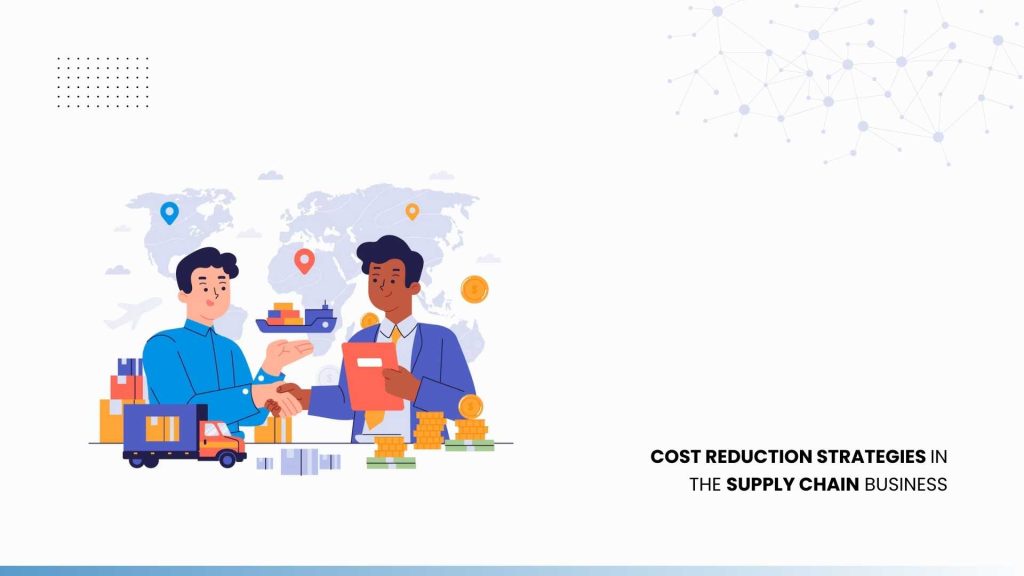Managing the supply chain involves supervising the flow of products from raw materials to customers to minimize waste, improve customer value, and gain a competitive edge.
Implementing strategies in the supply chain to reduce costs requires a holistic approach that optimizes efficiency at every stage of the process. One effective tactic is to streamline transportation routes and modes, consolidating shipments to minimize freight expenses.
Producing strong supplier connections can lead to better pricing. Technologies like predictive analytics aid in forecasting and inventory management, cutting costs. Sustainability efforts reduce environmental impact and save money through energy efficiency and waste reduction.
Finally, Consistently assessing and adjusting strategies sustains effective cost-reduction efforts amid changing market conditions, fostering efficient and adaptable supply chains for decreased operational costs.
Strategies to reduce supply chain costs
Here are a few strategies to consider that help reduce supply chain costs.
Improving Cycle Times
Advanced Automation and Robotics: Integrating automation and robotics into manufacturing processes can enhance efficiency and reduce cycle times.
Efficient Supplier Tooling and Machinery: Encouraging suppliers to upgrade machinery and tooling can improve production speed.
Advanced Materials and Manufacturing Techniques: Embracing innovative methods like additive manufacturing can reduce traditional machining and assembly times.
Real-Time Monitoring and Control Systems: Implementing real-time sensors and data analytics allows for identifying and rectifying inefficiencies promptly.
Mitigating Supply Chain Risk
Maintain visibility throughout the supply chain: Ensuring transparency helps identify potential risks and implement timely interventions.
Diversify Global Regions: Expanding supplier bases across diverse geographical regions helps reduce dependency on any single location, thereby mitigating the impact of regional disruptions.
Digitize Your Supply Chain: Leveraging digital technologies enables better monitoring, forecasting. And management of supply chain processes, enhancing resilience against disruptions.
Building Sustainable Long-Term Partnerships
Foster Collaboration with Suppliers: Cultivating strong relationships with suppliers fosters collaboration and cooperation, leading to benefits such as cost savings, volume discounts, and extended payment terms.
Focus on Sustainability: Prioritizing sustainable practices in partnerships can improve operational efficiency and lead to long-term cost savings through reduced waste.
Enhance Flexibility: Collaborative partnerships offer flexibility in cost and lead time options, allowing for better adaptation to changing market conditions and demands.
Adopt a Process-Centric View
By analyzing and optimizing each step in the supply chain process, you can identify inefficiencies and areas for improvement. It may involve reorganizing workflows, streamlining operations, and eliminating unnecessary steps or redundancies. A process-centric view lets you focus on enhancing efficiency and reducing costs.
Embrace New Technology
Implementing advanced software solutions such as supply chain management systems, predictive analytics. And inventory optimization tools can enhance visibility, coordination, and decision-making across the supply chain. Additionally, blockchain and IoT can provide real-time tracking and monitoring capabilities, improving efficiency and reducing costs.
Deploy Intelligent Automation
Intelligent automation, including robotics, machine learning, and artificial intelligence, can automate repetitive tasks, increase operational efficiency, and reduce labor costs. By leveraging intelligent automation, organizations can achieve greater speed, accuracy, and cost-effectiveness in their supply chain operations.
Conclusion
Implementing an Acumatica ERP solution at the core of your operations provides insight into all facets of your supply chain procedures. Real-time visibility is available on both local and global activities.
Through personalized dashboards and tailored reports, you can proactively tackle any issues with precision and prevent them from arising. It ensures products are made correctly, orders are delivered on time, and satisfied shoppers become loyal customers.

Vijay comes with a vast experience in ERP and enterprise solutions space with about 20 years of experience in various packaged application like Acumatica, SAP, Orion, Salesforce.com, SugarCRM and, SalesLogix.

